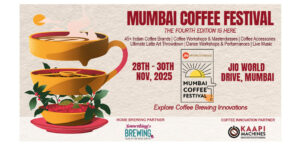Why Top Event Planners are Turning to Visualization Tools for Competitive Advantage

By Piyush Gupta, CEO at Vosmos
In the business of events, where first impressions and flawless execution define success, the margin for error has all but disappeared. Clients today expect precision, creativity, and speed, all delivered within shrinking timelines. For top event planners, the answer to meeting these expectations lies in one powerful shift: embracing visualization tools.
Event visualization has evolved from being a “nice-to-have” design feature to a strategic differentiator. The ability to visualize every element of an event before it’s built from stage layouts and lighting to seating arrangements and digital touchpoints is changing how planners pitch, plan, and perform. And in a market where competition is fierce and attention spans are short, these tools offer a real edge.
From Guesswork to Clarity
Traditional event planning relied heavily on static blueprints, mood boards, and imagination. Clients often had to visualize an experience based on abstract renderings, which led to misunderstandings, revisions, and last-minute surprises.
Visualization tools have removed that uncertainty. They allow planners to present immersive 3D renderings or digital twins of event venues where every angle, color, and texture is mapped in real time. For decision-makers, this means they can see what their guests will experience before a single prop is moved.
The impact is immediate: faster approvals, fewer errors, and greater confidence. A CFO signing off on a multi-crore event doesn’t need to imagine the layout they can walk through it virtually and make informed calls instantly.
The Competitive Edge
The event industry thrives on differentiation. Every planner wants to deliver something memorable, and every brand wants its event to stand apart. Visualization tools turn this creative ambition into a business advantage.
By visualizing an event in advance, planners can:
- Showcase concepts persuasively: A realistic digital walkthrough often does more than any presentation deck could. It’s storytelling through experience.
- Enhance collaboration: Cross-functional teams from marketing to logistics can align better when they’re working off a shared, interactive model.
- Optimize resources: By testing setups virtually, teams can avoid costly trial runs and unnecessary material wastage.
- Speed up turnaround times: Ideas can be tested and refined digitally, helping planners respond faster to client feedback.
In short, visualization is not just a tool for creativity it’s a tool for efficiency and profitability.
Technology Meets Human Ingenuity
The most successful planners today are those who merge artistic instinct with digital intelligence. Visualization tools don’t replace creativity; they amplify it. They help planners experiment fearlessly trying lighting schemes, stage builds, and even crowd flow simulations all without the real-world cost or risk.
Emerging platforms now integrate with metaverse environments and AI-driven design software, allowing planners to move beyond physical constraints entirely. A hybrid product launch, for instance, can be designed simultaneously for an in-person venue and a virtual audience, ensuring both spaces deliver an equally engaging experience.
This convergence of creativity and technology is precisely where the industry is heading and where top event planners are already staking their ground.
The New Client Expectation
CXOs and CMOs driving large-scale events today operate in a data-first world. They expect measurable outcomes and agile execution. Visualization tools align with this mindset, offering clarity, control, and precision all while showcasing innovation.
For brands, partnering with event planners who leverage such tools signals confidence. It demonstrates preparedness, transparency, and technical competence all of which influence decision-making at the highest level.
The Future Is Visual
As immersive technologies mature, visualization will become the foundation of how events are conceived and sold. In the same way architects wouldn’t dream of designing a building without a 3D model, event planners will soon find visualization indispensable.
Those who adopt it early are already reaping the benefits: higher win rates in pitches, smoother client collaboration, and a consistent ability to deliver experiences that exceed expectations.
In an industry built on creating moments that last, visualization gives event planners something equally valuable a lasting competitive advantage.








